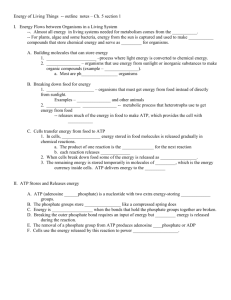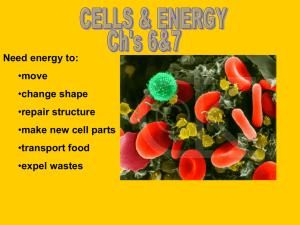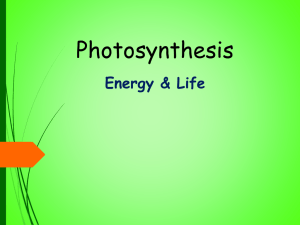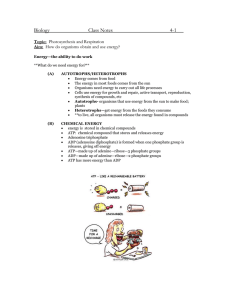Chapter 5: Photosynthesis and Cellular Respiration Objectives Section 1-
advertisement
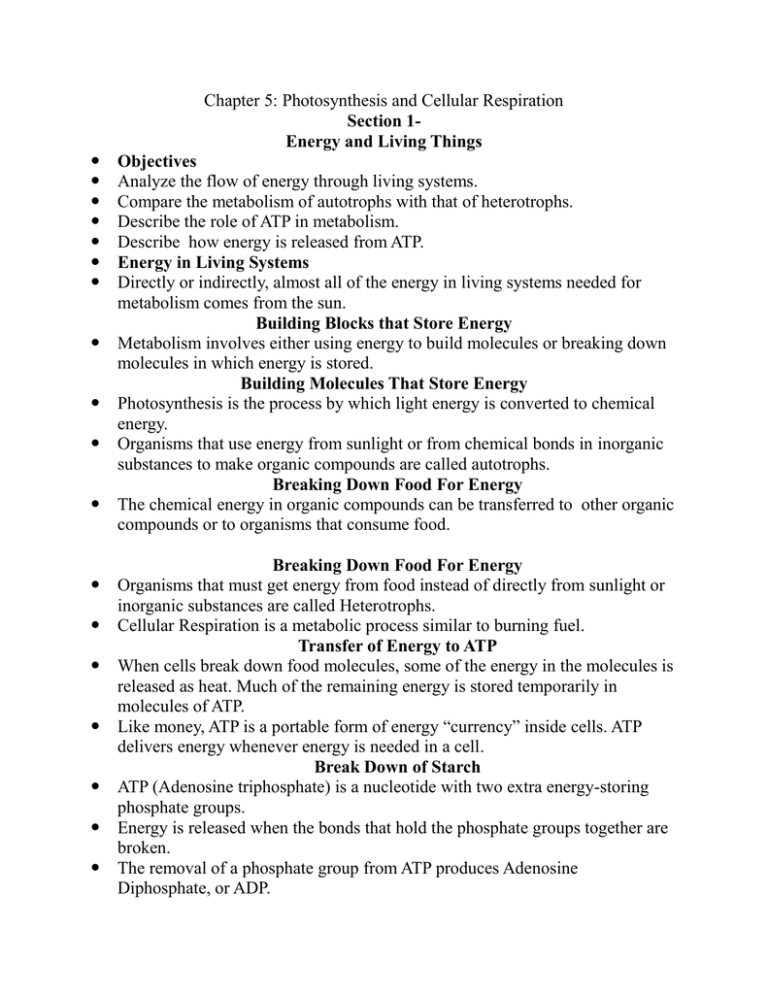
Chapter 5: Photosynthesis and Cellular Respiration Section 1Energy and Living Things Objectives Analyze the flow of energy through living systems. Compare the metabolism of autotrophs with that of heterotrophs. Describe the role of ATP in metabolism. Describe how energy is released from ATP. Energy in Living Systems Directly or indirectly, almost all of the energy in living systems needed for metabolism comes from the sun. Building Blocks that Store Energy Metabolism involves either using energy to build molecules or breaking down molecules in which energy is stored. Building Molecules That Store Energy Photosynthesis is the process by which light energy is converted to chemical energy. Organisms that use energy from sunlight or from chemical bonds in inorganic substances to make organic compounds are called autotrophs. Breaking Down Food For Energy The chemical energy in organic compounds can be transferred to other organic compounds or to organisms that consume food. Breaking Down Food For Energy Organisms that must get energy from food instead of directly from sunlight or inorganic substances are called Heterotrophs. Cellular Respiration is a metabolic process similar to burning fuel. Transfer of Energy to ATP When cells break down food molecules, some of the energy in the molecules is released as heat. Much of the remaining energy is stored temporarily in molecules of ATP. Like money, ATP is a portable form of energy “currency” inside cells. ATP delivers energy whenever energy is needed in a cell. Break Down of Starch ATP (Adenosine triphosphate) is a nucleotide with two extra energy-storing phosphate groups. Energy is released when the bonds that hold the phosphate groups together are broken. The removal of a phosphate group from ATP produces Adenosine Diphosphate, or ADP.
